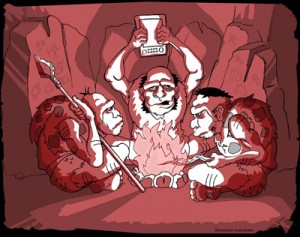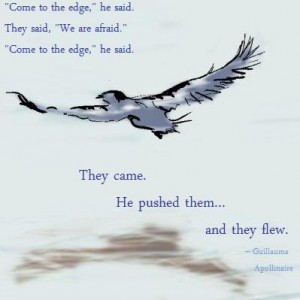Kristen J. Tsetsi has posted an article at her blog, The Cost of Kindle Books – Pay up or Shut Up, which has drawn quite a lot of discussion. If you’re an author or a reader, I recommend you check it out. I’ll first post my response below, and then I’ll expand just a touch at the end.
———-
This clearly displays the frustration on the part of authors who are not making a heck of a lot of money. The problem is exacerbated, of course, BY AUTHORS. Every time an author gives away her work, another author feels pressured to do the same in order to compete. Authors have been giving away their work forever. Anyone tried to place a story in a literary magazine lately?
I think authors should never — and I mean NEVER — work for free. Do plumbers work for free? Do teachers work for free? A loss-leader promotion to drive traffic to other products is one thing, but simply giving it away is nuts.
However, eBooks should cost significantly less than a paperback; the economics of production are a guiding factor in the pricing of any product. As an author, I can make more on my $4.99 eBook than I could make on my $27.99 hardcover through a traditional publisher. And I can “produce” it with far less up-front investment, in far less time.
Ultimately, the market will decide (and yes, that means the buyers) what a product is worth. Authors can help themselves by not giving away their work and establishing those expectations, but they must respond to market conditions. As for me, I’ll be selling my eBook for $4.99, because I think that’s a fair price all around. That means J. won’t be buying my book, but I can live with that.
In fact, that $4.99 price point is the amount above which I’ll likely balk at buying an eBook. I might pay more, but man, it would have to be something special. We all have our limits.
And to the publishers who price their eBooks at the level of their paperbacks, thereby asking eBook buyers to SUBSIDIZE their paperback business, I say, “No thank you very much.”
———-
It’s important, particularly for indie authors who are wading into “business” for the first time, to understand the dynamics of market response. The customer is king. Always.
At some point, if authors are unhappy with the customers’ decisions about what they’re willing to pay, they’ll have a difficult decision to make: A) Price it lower to meet customer demands, and to sell more books, or; B) Keep the price up, and settle on the fact that they’ll sell fewer books.
Either is a legitimate approach, driven by the author’s true goals. I think that, ultimately, holding the price up, but having a large selection to offer your readers, will be the key. Yes, you may sell fewer copies per book, but the sheer number of books you offer will ramp up your income.
I am loath to give away my book, after spending 5 years toiling over it, and I’ll likely choose Option B above. I plan to price my eBook at $4.99, which I think is eminently fair—an absolute bargain.
Indeed, as co-owners of Evolved Publishing, D.T. Conklin and I have concluded that $4.99 should be the regular, non-promoted price for all our books. Some of our authors may feel differently at times, and we’ll allow them some flexibility, but I think anything higher is inappropriate in most cases, and anything less begs the question, from a business perspective: Why bother? Every business asks that question at the beginning, and again each step along the way.
For readers too, that last question must be part of the decision-making process about what to buy, and how much to pay. If you want great books from great authors, you’ll have to pay enough to make it worth their while. Yes, you can get a lot of eBooks today for $0.99-$2.99. Have you sampled some of those? I have, and I’ve not been terribly impressed. Ultimately, in this business as in any other, you get what you pay for. In my experience, the best books are those selling for $4.99-$7.99. And guess what? Many of those authors are succeeding nicely.
The issue isn’t price alone; it’s about value. It’s a subject I’ve addressed in two previous posts: Quality Matters and Quality Counts when Publishing eBooks.
I think we’ll be sorting out this eBook pricing thing for a couple years. The entire market remains in a state of flux. Ask 20 people what they think, and you’ll get several different answers.
———-









Please follow me here: